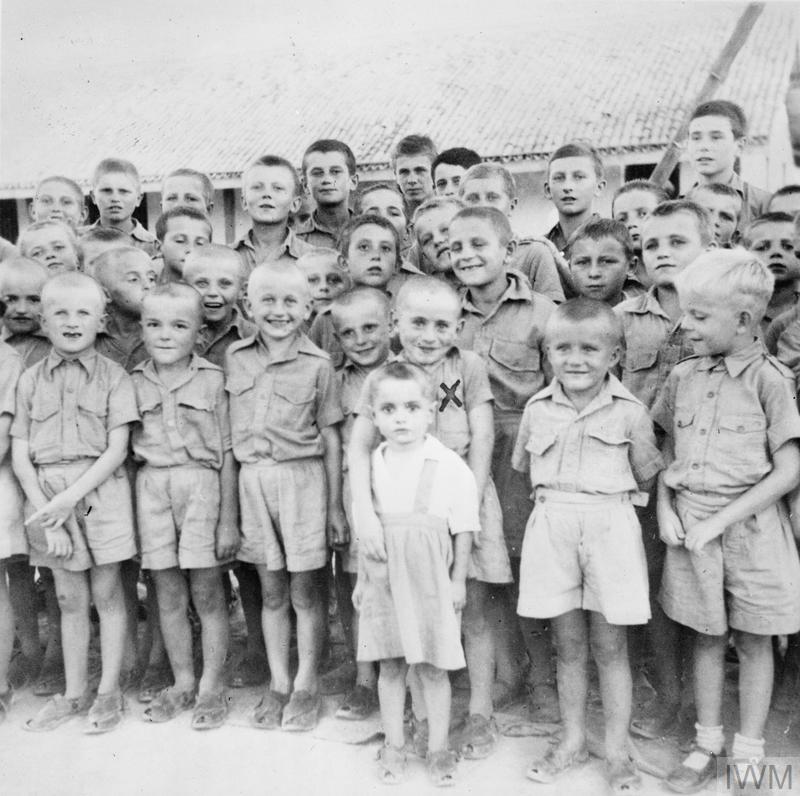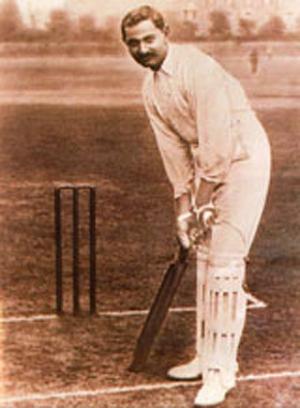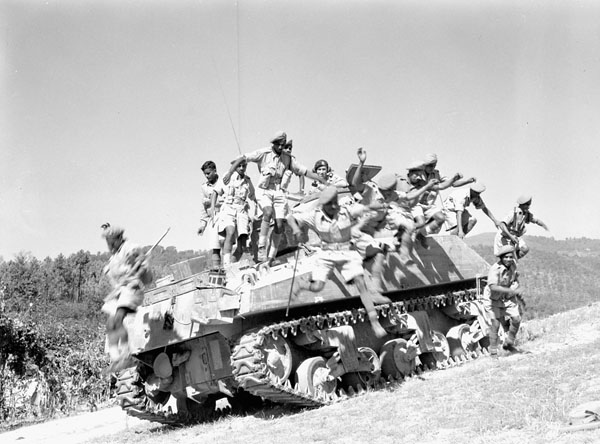|
Memorial Pillar (Valivade)
The Memorial Pillar located in Valivade (a village near Kolhapur, India) is in memory of over 5000 Polish refugees who escaped to India during World War II and were given shelter in the area. Poland''s Deputy Foreign Minister Marcin Przydacz unveiled the pillar on 14 September 2019. Background The first group of refugees had arrived in Valivade on 11 June 1943 and stayed till 1948. Whereas in 1948, many Poles returned to their homeland, a few stayed back. Valivade was the largest settlement of Polish citizens In India during the war. There were other smaller Polish settlements in India at the time in areas such as Balachadi and Panchgani which offered settlement mainly due to the hospitality of Digvijaysinhji Ranjitsinhji, Maharaja Jam Sahib of Nawanagar State Nawanagar was an Indian princely state in the historical Halar region, located on the southern shores of the Gulf of Kutch. It was ruled by the Jadeja Rajput dynasty and became the part of newly formed India. The ... [...More Info...] [...Related Items...] OR: [Wikipedia] [Google] [Baidu] |
Kolhapur
Kolhapur () is a city on the banks of the Panchganga River in the southern part of the Indian state of Maharashtra. It is the administrative headquarter of the Kolhapur district. In, around 2 C.E. Kolapur's name was 'Kuntal'. Kolhapur is known as ''`Dakshin Kashi''' or Kashi of the South because of its spiritual history and the antiquity of its shrine Mahalaxmi, better known as Ambabai. The region is known for the production of the famous hand-crafted and braided leather slippers called Kolhapuri chappal, which received the Geographical Indication designation in 2019. In Hindu mythology, the city is referred to as "''Karvir''." Before India became independent in 1947, Kolhapur was a princely state under the Bhosale Chhatrapati of the Maratha Empire. It is an important center for the Marathi film industry. Etymology Kolhapur is named after Kolhasur, a demon in Hindu History. According to History, the demon Kolhasur renounced asceticism after his sons were killed by God f ... [...More Info...] [...Related Items...] OR: [Wikipedia] [Google] [Baidu] |
World War II
World War II or the Second World War, often abbreviated as WWII or WW2, was a world war that lasted from 1939 to 1945. It involved the vast majority of the world's countries—including all of the great powers—forming two opposing military alliances: the Allies and the Axis powers. World War II was a total war that directly involved more than 100 million personnel from more than 30 countries. The major participants in the war threw their entire economic, industrial, and scientific capabilities behind the war effort, blurring the distinction between civilian and military resources. Aircraft played a major role in the conflict, enabling the strategic bombing of population centres and deploying the only two nuclear weapons ever used in war. World War II was by far the deadliest conflict in human history; it resulted in 70 to 85 million fatalities, mostly among civilians. Tens of millions died due to genocides (including the Holocaust), starvation, ma ... [...More Info...] [...Related Items...] OR: [Wikipedia] [Google] [Baidu] |
Balachadi
Balachadi is a village in Jodiya Taluka of Jamnagar district, Gujarat, India. It is 25 kilometres east of Jamnagar, near the Gulf of Kutch. History During the British period, Balachari belonged to the Hadiana sub-division of the Jodiya ''pargana'' under Nawanagar State. The Balachadi Estate was formerly a seaside summer resort that belonged to the rulers of Nawanagar. The estate comprises 426 acres of land. There was a campsite for Polish refugee children of World War II, built by K. S. Digvijaysinhji, Jam Saheb Maharaja of Nawanagar in 1942, near his summer resort. He gave refuge to hundreds of Polish children rescued from Soviet concentration camps. The campsite is now part of the Sainik School. There were other bigger Polish settlements in India at the time in areas such as Valivade and Panchgani in Maharashtra. Valivade was the largest settlement of Polish citizens In India during the war. The Sainik School, Balachadi is the only Sainik School of Gujarat. It was estab ... [...More Info...] [...Related Items...] OR: [Wikipedia] [Google] [Baidu] |
Panchgani
Panchgani, called Paachgani (पाचगणी in Marathi), is a hill station and municipal council in Satara district in Maharashtra, India. Panchgani attracts tourists throughout the year. It is also known for having many residential educational institutions. Panchgani is around 108 kilometres from Pune and 250 kilometres from Mumbai. History Panchgani was developed by the British during the British Raj as a summer resort under the supervision of Lord John Chesson in the 1860s. Panchgani was developed as a retirement place because it remained pleasant throughout the year. He surveyed the hills of this region with Rustomji Dubash, and finally decided on this nameless area around the five villages: Dandeghar, Godavali, Ambral, Khingar, and Taighat. The place was aptly named Panchgani, meaning "land between five villages", and Chesson was made superintendent. To develop the infrastructure, Chesson encouraged various professionals - tailors, dhobis, butchers, vegetable vendors ... [...More Info...] [...Related Items...] OR: [Wikipedia] [Google] [Baidu] |
Digvijaysinhji Ranjitsinhji
Sir Digvijaysinhji Ranjitsinhji Jadeja (18 September 1895 – 3 February 1966) was the Maharaja Jam Sahib of Nawanagar from 1933 to 1966, succeeding his uncle, the famed cricketer Ranjitsinhji. Early life and military career Ranjitsinhji, a Yaduvanshi Rajput, was born at Sadodar, Gujarat on 18 September 1895 during the British Raj, nephew of the famed cricketer K.S. Ranjitsinhji. He was educated at The Rajkumar College, Rajkot, in Saurashtra, then at Malvern College and University College London. Commissioned as second lieutenant in the British Army in 1919, Digvijaysinhji enjoyed a military career for over two decades. Attached to the 125th Napier's Rifles (now 5th Battalion (Napier's), The Rajputana Rifles) in 1920, he served with the Egyptian Expeditionary Force, subsequently receiving a promotion to Lieutenant in 1921. He then served with the Waziristan Field Force from 1922 to 1924; after a promotion to captain in 1929, he retired from the army in 1931. However, h ... [...More Info...] [...Related Items...] OR: [Wikipedia] [Google] [Baidu] |
Maharaja
Mahārāja (; also spelled Maharajah, Maharaj) is a Sanskrit title for a "great ruler", "great king" or " high king". A few ruled states informally called empires, including ruler raja Sri Gupta, founder of the ancient Indian Gupta Empire, and Chandragupta Maurya. 'Title inflation' soon led to most being rather mediocre or even petty in real power, which led to compound titles (among other efforts) being used in an attempt to distinguish some among their ranks. The female equivalent, Maharani (or Maharanee, Mahārājñī, Maharajin), denotes either the wife of a Maharaja (or Maharana etc.) or also, in states where it was customary, a woman ruling without a husband. The widow of a Maharaja is known as a Rajmata, "queen mother". Maharajakumar generally denotes a son of a Maharaja, but more specific titulatures are often used at each court, including Yuvaraja for the heir (the crown prince). The form "Maharaj" (without "-a") indicates a separation of noble and religious office ... [...More Info...] [...Related Items...] OR: [Wikipedia] [Google] [Baidu] |
Jam Sahib
Jam Sahib ( gu, જામ સાહેબ), is the title of the ruling prince of Nawanagar, now known as Jamnagar in Gujarat, an Indian princely state. Jam Sahibs of Nawanagar References External links Nawanagar History and Genealogyat ''Queensland University , mottoeng = By means of knowledge and hard work , established = , endowment = A$224.3 million , budget = A$2.1 billion , type = Public research university , chancellor = Peter Varghese , vice_chancellor = Deborah Terry , city = Br ...'' Royal titles Jamnagar district Maharajas of Nawanagar Titles in India 1540 establishments in India {{India-royal-stub ... [...More Info...] [...Related Items...] OR: [Wikipedia] [Google] [Baidu] |
Nawanagar State
Nawanagar was an Indian princely state in the historical Halar region, located on the southern shores of the Gulf of Kutch. It was ruled by the Jadeja Rajput dynasty and became the part of newly formed India. The city is now known as Jamnagar. It had an area of and a population estimated at 336,779 in 1901. Its rulers, who use the title of "Jam Saheb" are of the same clan as the Cutch State, Rao of Kutch. They were entitled to a 13-gun salute. The state flag was a rectangular red flag with a white elephant, near and facing the hoist. During the British Raj, British, the state was part of the Kathiawar Agency, within the Gujarat Division of Bombay Presidency. The state had a pearl fishery and much of its wealth came from this. Nawanagar is also famous for its late ruler Jam Saheb Ranjitsinhji (died 1933), who was a famous cricket player at Cambridge in England before his accession to the throne. History Nawanagar was founded in 1540 by Jam Rawal, Jam Sri Rawalji, a descendant ... [...More Info...] [...Related Items...] OR: [Wikipedia] [Google] [Baidu] |
India–Poland Relations
Indo-Polish relations are the bilateral relations between the Republic of Poland and the Republic of India. Historically, relations have generally been friendly, characterised by understanding and cooperation on an international front. History Origin: The Age of Discovery During the 16th century Renaissance and the Age of Discovery period in the Crown of the Kingdom of Poland, a small number of Poland's nobility, statesmen, merchants and writers visited India and fostered the abiding interest of the Polish people in the civilization, philosophy, spiritual traditions, art and culture of India. One of the first diplomatic dignitaries and travellers during this period to make Polish contact with India—then under the rule of the Mughal Empire, was the Polish nobleman and statesman who was a long serving royal courtier to King Sigismund III Vasa and from the distinguished senior Silesian noble house of Saszowski family. Others from this period include a Polish diplomatic repr ... [...More Info...] [...Related Items...] OR: [Wikipedia] [Google] [Baidu] |
Poland In World War II
World War II or the Second World War, often abbreviated as WWII or WW2, was a world war that lasted from 1939 to 1945. It involved the vast majority of the world's countries—including all of the great powers—forming two opposing military alliances: the Allies and the Axis powers. World War II was a total war that directly involved more than 100 million personnel from more than 30 countries. The major participants in the war threw their entire economic, industrial, and scientific capabilities behind the war effort, blurring the distinction between civilian and military resources. Aircraft played a major role in the conflict, enabling the strategic bombing of population centres and deploying the only two nuclear weapons ever used in war. World War II was by far the deadliest conflict in human history; it resulted in 70 to 85 million fatalities, mostly among civilians. Tens of millions died due to genocides (including the Holocaust), starvation, massa ... [...More Info...] [...Related Items...] OR: [Wikipedia] [Google] [Baidu] |
India In World War II
During the Second World War (1939–1945), India was a part of the British Empire. British Raj, India officially declared war on Nazi Germany in September 1939. India, as a part of the Allies of World War II, Allied Nations, sent over two and a half million soldiers to fight under British command against the Axis powers. India also provided the base for American operations in support of China in the China Burma India Theater. Indians fought with distinction throughout the world, including in the European theatre of World War II, European theatre against Germany, North African Campaign against Fascist Italy (1922–1943), fascist Italy, and in the South-East Asian theatre of World War II, southeast Asian theatre; while also defending the Indian subcontinent against the Japanese forces, including British Burma and the Crown colony of Ceylon. Indian troops were also redeployed in former colonies such as Singapore and Hong Kong, with the Japanese surrender in August 1945, a ... [...More Info...] [...Related Items...] OR: [Wikipedia] [Google] [Baidu] |







